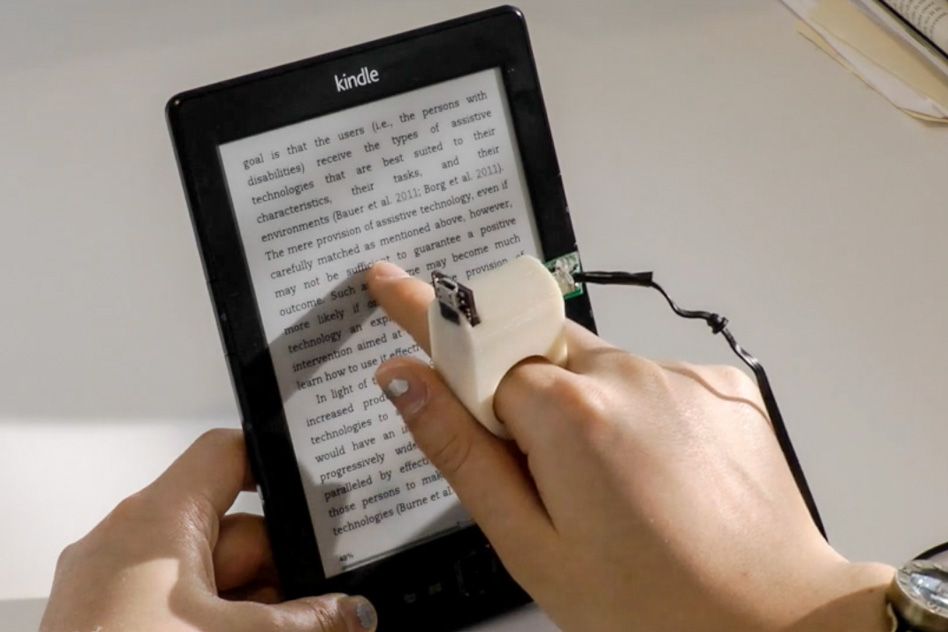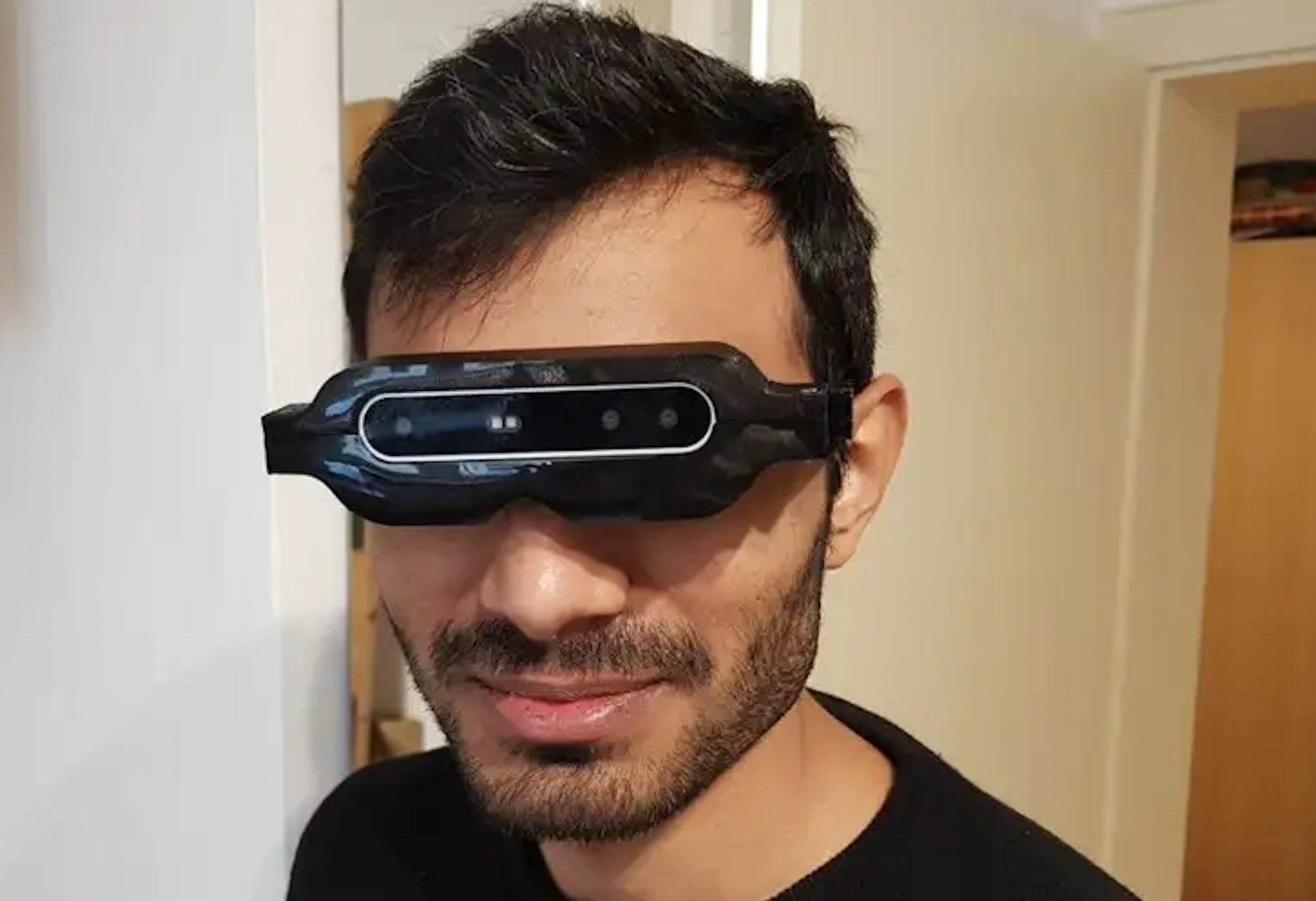Wearable Technology for Low Vision: A Game-Changer in Accessibility
Wearable Technology for Low Vision: A Game-Changer in Accessibility
Blog Article
Discover Ingenious Devices Designed for the Aesthetically Damaged
The growth of ingenious tools for the aesthetically damaged represents a substantial innovation in access and independence. Technologies such as clever glasses with AI abilities and mobile applications created to provide acoustic summaries are improving day-to-day experiences for individuals. In addition, wearable gadgets that utilize haptic feedback boost ecological recognition, while contemporary Braille technologies supply brand-new ways to involve with message. As these tools proceed to advance, their influence on the lives of those with aesthetic disabilities raises essential concerns concerning the future of inclusivity and autonomy in numerous elements of life. What lies in advance in this technical landscape?
Smart Glasses for Navigation

Smart glasses designed for navigating are changing the means visually damaged people connect with their setting. These sophisticated gadgets utilize a mix of camera modern technology, fabricated knowledge, and auditory comments to supply real-time details regarding surroundings. By employing barrier detection systems, wise glasses can signal customers to prospective hazards, making it possible for much safer movement in both unfamiliar and familiar settings.
The integration of GPS modern technology even more enhances navigation capacities, allowing customers to receive auditory instructions as they move. This hands-free strategy not just cultivates self-reliance yet also encourages aesthetically impaired individuals to navigate urban landscapes with raised self-confidence. Additionally, several smart glasses are outfitted with features that determine landmarks and street indicators, offering contextual details that enhances the individual experience.
Additionally, the development of these gadgets is constantly progressing, with firms working to enhance the accuracy of item acknowledgment and expand the variety of navigational attributes. As smart glasses become much more accessible and inexpensive, they hold the prospective to considerably change day-to-day live for visually impaired individuals. Eventually, these cutting-edge tools stand for an essential step toward inclusivity, offering enhanced wheelchair and a greater sense of autonomy for individuals navigating the globe around them.

Mobile Apps for Daily Living
Just how can mobile applications enhance the lives of visually damaged people? Mobile apps are revolutionizing the means aesthetically damaged users navigate their settings, manage day-to-day tasks, and gain access to details. These applications offer crucial support with various performances, cultivating independence and enhancing top quality of life.
Several innovative mobile applications are made specifically for everyday living. For example, applications like Be My Eyes attach visually damaged customers with sighted volunteers via video phone calls, permitting them to get real-time help with tasks such as reviewing labels or navigating unfamiliar rooms. In A Similar Way, Seeing AI, established by Microsoft, uses fabricated knowledge to describe environments, read text, and recognize things, properly transforming a smartphone into an effective tool for day-to-day assistance.
Additionally, navigation apps tailored for the aesthetically impaired, such as Aira and BlindSquare, provide audio-based instructions and environmental info, allowing customers to traverse their environments securely and confidently. Past navigating and immediate aid, mobile applications likewise support organization and task management, with features that help users establish tips, create to-do lists, and track appointments. In summary, mobile applications function as vital sources, empowering aesthetically impaired people to lead more independent and satisfying lives.
Wearable Technologies for Help
Empowerment through modern technology is progressively apparent in the realm of wearable tools made to help visually impaired people. These ingenious tools incorporate seamlessly into every day life, boosting navigation and providing vital feedback to individuals. Smart glasses geared up with cams can read and identify faces text aloud, allowing individuals to communicate even more confidently in professional and social settings.
Another notable advancement is using haptic comments systems in wearable tools. These systems utilize vibrations or other tactile signals to communicate info about the individual's setting, such as barriers or adjustments in surface, enhancing movement and safety. Wearable innovations also include wristbands that attach to smart devices, alerting individuals to alerts through refined resonances, hence enhancing connection without dependence on aesthetic signs.
As these modern technologies remain to progress, they are not just boosting freedom for aesthetically impaired individuals but also fostering a greater sense of addition in culture. By bridging the void in between obstacles encountered in day-to-day living and the capacity for autonomy, wearable technologies work as pivotal devices in the pursuit for equal rights and empowerment for those with visual impairments.
Sound Summary Tools
Audio summary devices play a critical duty in improving access for aesthetically impaired individuals, giving them with the capacity to engage with visual media. Smart go right here glasses for the visually impaired. These tools provide narrated descriptions of key aesthetic aspects in movies, tv programs, and live efficiencies, ensuring that customers can fully understand the context Your Domain Name and emotions conveyed with visuals
Audio summary can be integrated right into various systems, including streaming solutions, cinema testings, and live movie theater. Several prominent streaming solutions currently consist of audio summary as an access function, permitting audiences to pick it easily. Along with mainstream media, specialized apps likewise exist, offering audio summaries for art exhibits, museums, and various other cultural events.
The efficiency of audio description hinges on the skill of the storytellers, who need to communicate aesthetic details succinctly without detracting from the initial sound. Technologies in this field are also leading the means for more personalized experiences, where individuals can readjust the degree of detail and pacing according to their choices.
Braille Innovations and Tools
Braille gadgets and technologies have considerably transformed the way visually damaged people communicate with message and information. Modern innovations have led to the growth of functional tools that boost literacy and independence among users. Significantly, Braille present modern technologies have advanced, permitting vibrant reading experiences. These tools convert digital message into Braille, allowing users to access a huge array of info on tablet computers, mobile phones, and computer systems.
In addition, mobile Braille notetakers combine traditional Braille input with modern-day capabilities, helping with note-taking, organizing, and record modifying on the move. Screen readers for the blind. These compact devices frequently feature text-to-speech abilities, bridging the space in between Braille and acoustic details
Furthermore, cutting-edge Braille printers have emerged, permitting individuals to generate Braille tags, papers, and academic materials effectively. This availability promotes better engagement in instructional and specialist environments, inevitably promoting inclusivity.
In addition, research study right into clever Braille modern technologies remains to expand. Devices that include man-made knowledge are being checked out to supply real-time navigating help my response and contextual info, improving the user experience in varied setups. In general, these innovations show a commitment to encouraging visually damaged individuals through innovation, guaranteeing they can conveniently gain access to and involve with the world around them.

Conclusion
The improvement of ingenious devices for the aesthetically damaged substantially improves independence and lifestyle. Smart glasses, mobile applications, wearable modern technologies, audio summary tools, and Braille innovations collectively encourage people by supplying necessary navigation support, environmental recognition, and improved analysis experiences. These innovations not only foster greater incorporation yet likewise promote freedom in day-to-day activities, inevitably adding to a much more equitable and accessible society for visually impaired individuals. Proceeded development in this area holds guarantee for more improvements.
As wise glasses become a lot more economical and accessible, they hold the prospective to significantly transform day-to-day life for visually impaired customers. Mobile apps are transforming the method visually damaged customers navigate their atmospheres, take care of everyday jobs, and access info. Applications like Be My Eyes connect visually impaired individuals with sighted volunteers through video phone calls, permitting them to obtain real-time assistance with tasks such as reviewing tags or navigating unknown areas.In addition, navigating apps tailored for the visually impaired, such as Aira and BlindSquare, use audio-based instructions and ecological information, making it possible for users to traverse their environments securely and with confidence.The development of ingenious devices for the visually impaired significantly improves independence and high quality of life.
Report this page